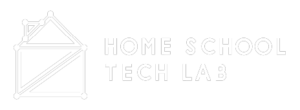Chromebook Lesson Ideas
History of ANYTHING Interactive Museum
About the Project
History can be a dry subject, especially when taught by lecture. What if students learned and then taught each other the material through interactive museum exhibits, then assessed each other’s learning? What if they were empowered to teach other classes and even adults – teachers, family members, and community members?
This project lets students build their historical knowledge, research skills, collaboration skills, and teaching skills by curating their own virtual museum! It can be used at any grade level with as much or as little direction on topics or resources as needed. Besides being a terrific learning project, it gives students the chance to engage in the real-life work of historians, museum exhibit creators, and docents.
Lesson Overview
Students work in groups of two to three in defined roles to create and then present an exhibit on a person, place, or thing from your unit of study. Each group can be assigned to a chapter, section, person, place or event from the time period being studied. You will serve as facilitator of the project and have ‘curator’ meetings to check on how groups are doing and provide support. It’s helpful to provide progress targets along the way. Don’t forget to celebrate the final products on exhibit day!
Tips and Suggestions
Before beginning this assignment, clearly explain the required elements of the project (pictures, video, vocabulary words, etc.). It is also important for your students to know and follow the rules of conducting research, using proper citations, and respecting image copyrights.
Students will need three tools to complete this project: a collaboration space, image tools, and an exhibit space. The options listed below are a good place to begin, however, many other tools are available.
COLLABORATION SPACE
Students will use this space to collect and share information and to communicate with members of their group. Possibilities include:
- Google Drive (great for storage, poor for communication)
- Google Keep (great for short notes, to-do lists, reflections, and resource collection)
- Trello (project management tool for dividing and tracking work in a group)
IMAGE TOOLS
Students will need to gather images from the web, create their own works, and photograph objects for inclusion in their exhibit. Possible tools include:
- Screencastify (takes screen images and video)
- Webcam Toy (use a Chromebook webcam to take a picture)
- Pixlr, PicMonkey, SumoPaint (image editing tools)
EXHIBIT SPACE
Each student or group will need to create a visual display of the information collected. Decide if you want students to create digital displays (website, presentation, etc.) or print displays (brochure, poster, book, etc.).
Digital / Print Poster Tools: Takk, Canva, LucidPress, Glogster, S’more, BlendSpace
Video Tools: WeVideo, PowToon, StoryBird, Movenote
Presentation Tools: Google Presentation, Prezi, Pear Deck, Nearpod
Webtools: Versal, Weebly, Wix, Google Sites
 CHROME WEB STORE Each of the products in bold in this section can be found in the Chrome Web Store. Just search for them by name!
CHROME WEB STORE Each of the products in bold in this section can be found in the Chrome Web Store. Just search for them by name!
Lesson submitted by Matt McCullough, HS History Teacher, Kalamazoo, Michigan





Reader Interactions